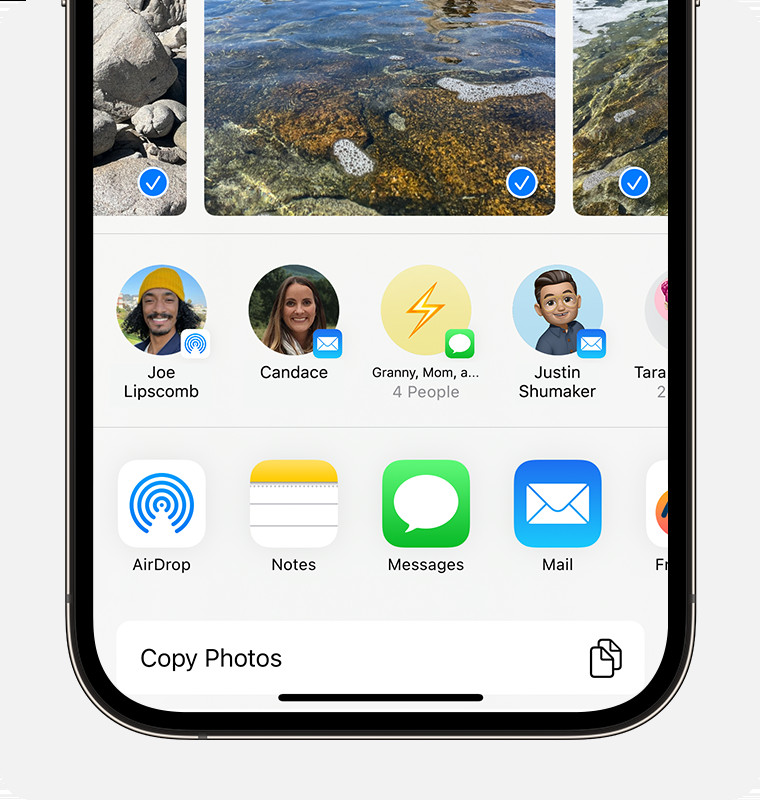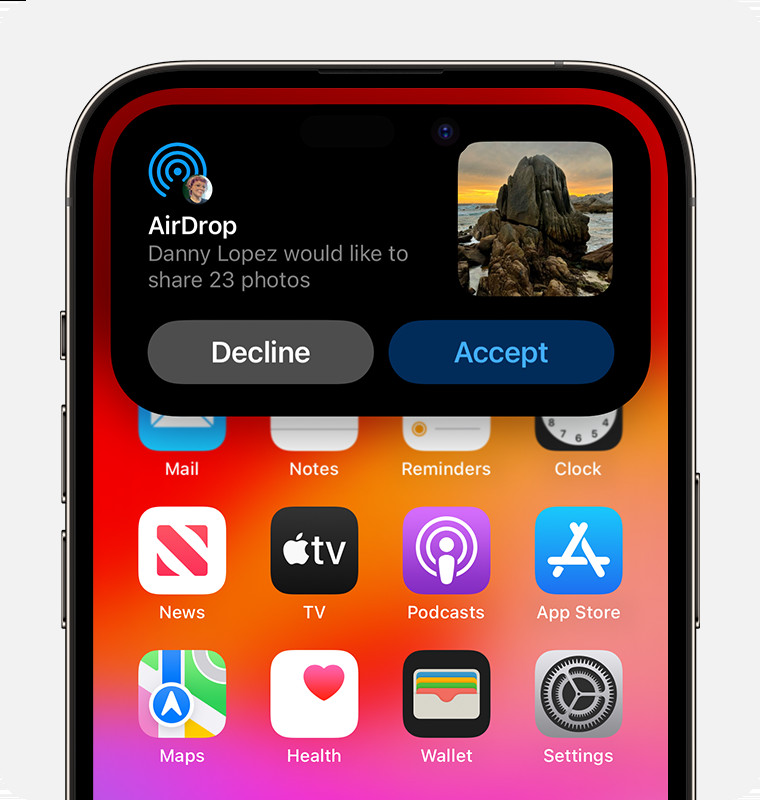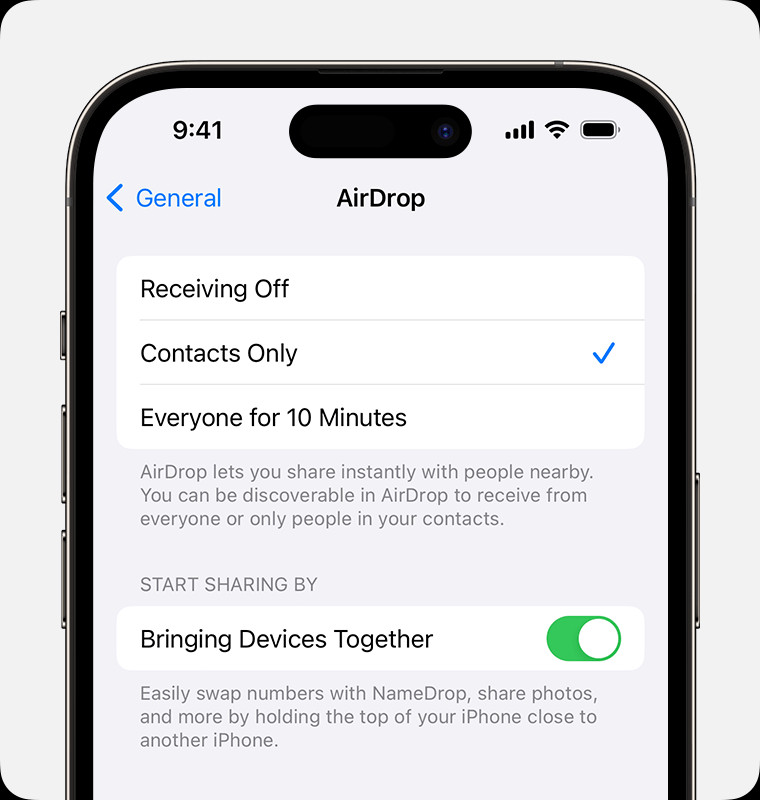AirDrop is a fantastic feature in the Apple ecosystem that allows you to seamlessly share photos, videos, documents, and more between iPhones, iPads, and Macs. If you’re looking for a quick and easy way to transfer photos from your iPhone to a friend’s iPad or vice versa, AirDrop is your go-to solution. This guide will walk you through everything you need to know about How To Airdrop Photos like a pro.
Getting Ready to AirDrop Your Photos
Before you start sharing those precious memories, there are a few essential checks to ensure a smooth AirDrop experience. Let’s get these prerequisites out of the way:
-
Proximity is Key: AirDrop relies on Bluetooth and Wi-Fi to create a peer-to-peer connection. Make sure the person you want to share photos with is nearby, ideally within a 30-foot range. Both devices should have Bluetooth and Wi-Fi enabled.
-
Wi-Fi and Bluetooth: Must be ON: Double-check that both your Wi-Fi and Bluetooth are turned on. You don’t need to be connected to a specific Wi-Fi network, but Wi-Fi needs to be active. Similarly, Bluetooth should be enabled for device discovery.
-
Personal Hotspot: Turn it OFF: If either you or the recipient has Personal Hotspot activated, it can interfere with AirDrop. Temporarily disable Personal Hotspot on both devices to avoid any conflicts.
-
AirDrop Receiving Settings: This is crucial! Ask the person you’re sending photos to about their AirDrop receiving settings.
- Contacts Only: If they have “Contacts Only” selected, and you are in their contacts, they need your Apple ID email address or phone number saved in your contact card in their phone for AirDrop to work.
- Everyone: If you are not in their contacts, or to simplify the process, they can temporarily set their AirDrop receiving setting to “Everyone”. Don’t worry, they can change it back later for privacy.
You can adjust your own AirDrop receiving settings at any time to control who can discover your device and send you content. We’ll cover how to adjust these settings later in this guide.
Step-by-Step Guide: How to AirDrop Photos from iPhone or iPad
Now that you’ve prepped your devices, let’s dive into the actual process of AirDropping photos.
-
Open the Photos App and Select Your Photos: Launch the Photos app on your iPhone or iPad and navigate to the photos you want to share. You can select single or multiple photos. For multiple photos, tap “Select” in the top right corner and then tap on each photo you wish to AirDrop.
-
Tap the Share Button: Once you’ve selected your photos, look for the Share button. It’s usually located in the bottom left corner and looks like a square with an arrow pointing upwards. Tap this button to bring up the share sheet.
-
Find and Tap the AirDrop Button: In the share sheet, you’ll see various sharing options. Scroll through the rows of icons until you locate the AirDrop button. It’s represented by a circle with radiating lines. Tap the AirDrop button.
 An iPhone showing the share sheet with photos selected and the AirDrop option displayed.
An iPhone showing the share sheet with photos selected and the AirDrop option displayed.Alt text: iPhone share sheet displayed with multiple photos selected, highlighting the AirDrop icon as the sharing option.
-
Choose the AirDrop Recipient: After tapping AirDrop, your device will start searching for nearby AirDrop-enabled devices. You’ll see a list of available users.
- Contacts: If the person is in your Contacts, their name and profile picture (if they have one set up) will appear.
- Non-Contacts: If they are not in your contacts, only their name will be displayed without a profile picture.
Tap on the name of the person you want to AirDrop your photos to. You can also AirDrop photos between your own Apple devices if they are nearby and logged into the same Apple ID.
-
Wait for the Transfer to Complete: Once you tap the recipient’s name, the photo transfer will begin automatically. A progress circle will appear on both your device and the recipient’s device. The transfer speed depends on the size and number of photos you are sending.
Pro Tip for iOS 17 Users: NameDrop for Quick Sharing
If both you and the person you are sharing with are using iPhones with iOS 17 or later, there’s an even faster way to AirDrop photos! Simply open the content you want to share and bring your iPhones close together. This feature, called NameDrop, streamlines the AirDrop process for contacts.
Accepting AirDropped Photos
When someone AirDrops photos to you, you’ll receive an alert on your iPhone or iPad screen.
-
AirDrop Alert: An AirDrop alert will pop up, showing a preview of the content being shared and offering two options: “Accept” or “Decline.”
 An iPhone showing an AirDrop alert that you can decline or accept.
An iPhone showing an AirDrop alert that you can decline or accept.Alt text: AirDrop alert displayed on an iPhone screen, prompting the user to either Accept or Decline the incoming file transfer.
-
Tap “Accept”: To receive the photos, simply tap “Accept.” The AirDrop transfer will begin, and the photos will be saved directly to your Photos app.
- Automatic Acceptance for Your Own Devices: If you AirDrop photos to yourself (e.g., from your iPhone to your iPad logged in with the same Apple ID), you won’t see the “Accept” or “Decline” prompt. The photos will be automatically saved to your other device.
Managing Your AirDrop Settings for Privacy
Controlling who can see your device and send you content via AirDrop is essential for privacy. You can easily adjust your AirDrop settings in two ways: through the Settings app or Control Center.
Method 1: Via Settings App
-
Open Settings: Launch the Settings app on your iPhone or iPad.
-
Tap “General”: Scroll down and tap on the “General” option.
-
Tap “AirDrop”: In the General settings, find and tap “AirDrop.”
-
Choose Your Preferred Setting: You’ll see three options:
- Receiving Off: You will not receive any AirDrop requests. Your device will not be discoverable via AirDrop.
- Contacts Only: Only people in your Contacts list can see your device and AirDrop content to you. This offers a good balance of convenience and privacy.
- Everyone: All nearby Apple devices using AirDrop can see your device and send you content. Caution: For security reasons, if you choose “Everyone,” in iOS 16.2 and later, it will revert to “Contacts Only” after 10 minutes (or if you are not signed in with your Apple ID, it will revert to “Receiving Off” after 10 minutes).
 An iPhone showing AirDrop settings with Contacts Only selected.
An iPhone showing AirDrop settings with Contacts Only selected.Alt text: iPhone AirDrop settings screen showing three options: Receiving Off, Contacts Only, and Everyone, with Contacts Only currently selected.
Method 2: Via Control Center
Control Center provides quick access to AirDrop settings.
- Open Control Center:
- iPhone X or later/iPad with iOS 12 or later/iPadOS: Swipe down from the upper-right corner of your screen.
- iPhone 8 or earlier: Swipe up from the bottom of the screen.
- Access Network Settings: Look for the network settings card in the upper-left corner of Control Center (it usually contains Airplane Mode, Cellular Data, Wi-Fi, and Bluetooth icons). Press firmly or touch and hold this card to expand it.
- Touch and Hold AirDrop Button: In the expanded network settings, you’ll see the AirDrop button. Touch and hold the AirDrop button.
- Select Your AirDrop Option: A menu will pop up with the same three AirDrop options: Receiving Off, Contacts Only, and Everyone. Choose your desired setting.
Troubleshooting: AirDrop Receiving Off Grayed Out?
If you find that the “Receiving Off” option is selected and you can’t change it, it might be due to Screen Time restrictions. Here’s how to check:
- Go to Settings > Screen Time.
- Tap “Content & Privacy Restrictions.”
- Tap “Allowed Apps.”
- Ensure AirDrop is Turned On: Make sure the toggle next to “AirDrop” is switched on (green). If it’s off, toggle it on to enable AirDrop.
Conclusion: AirDrop – Your Fast Photo Sharing Companion
AirDrop is an incredibly convenient and efficient way to share photos and other files between Apple devices. By understanding the prerequisites, following the simple steps, and managing your AirDrop settings, you can seamlessly transfer your photos whenever you need to. Start AirDropping your photos today and enjoy the ease of sharing within the Apple ecosystem!
